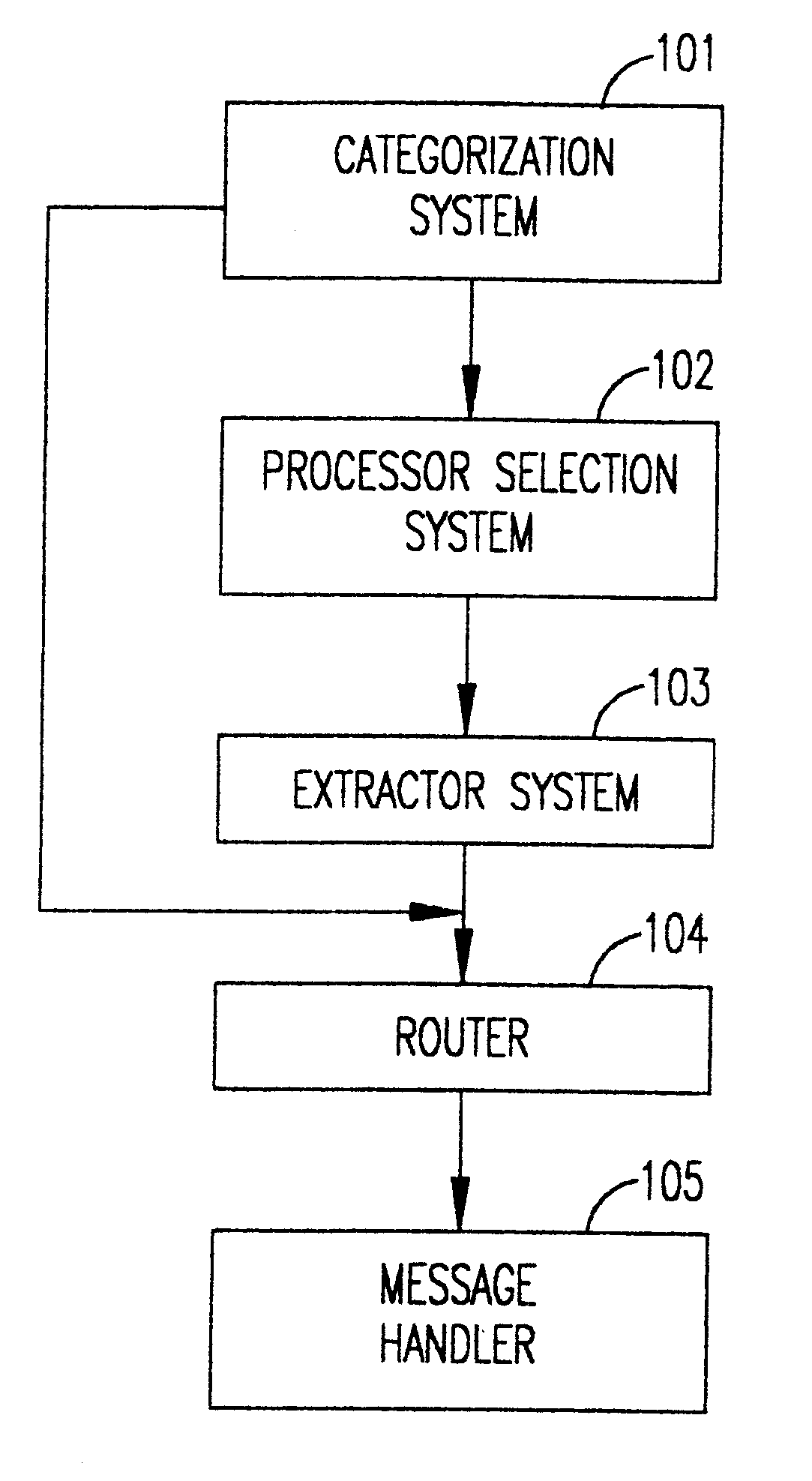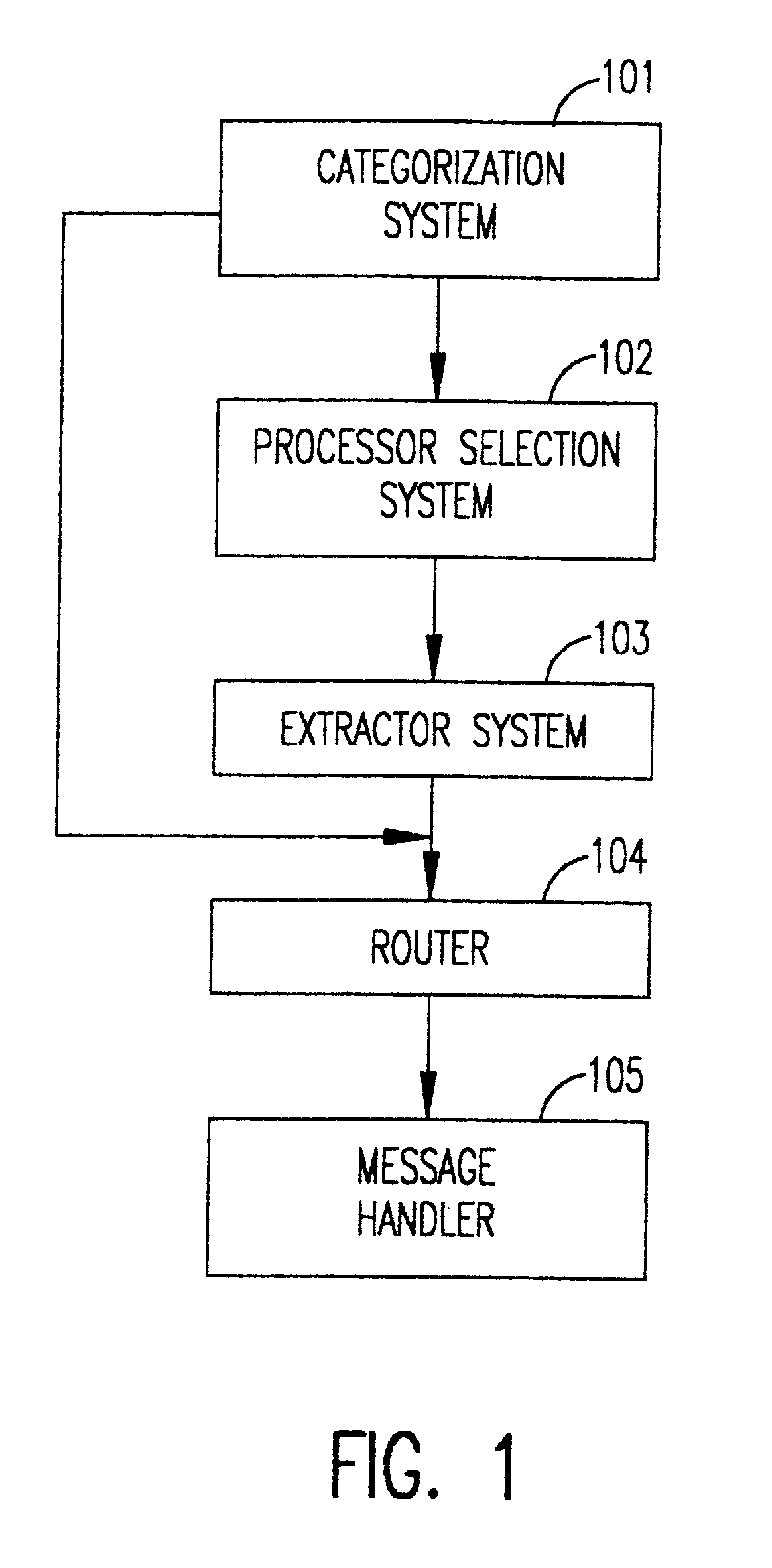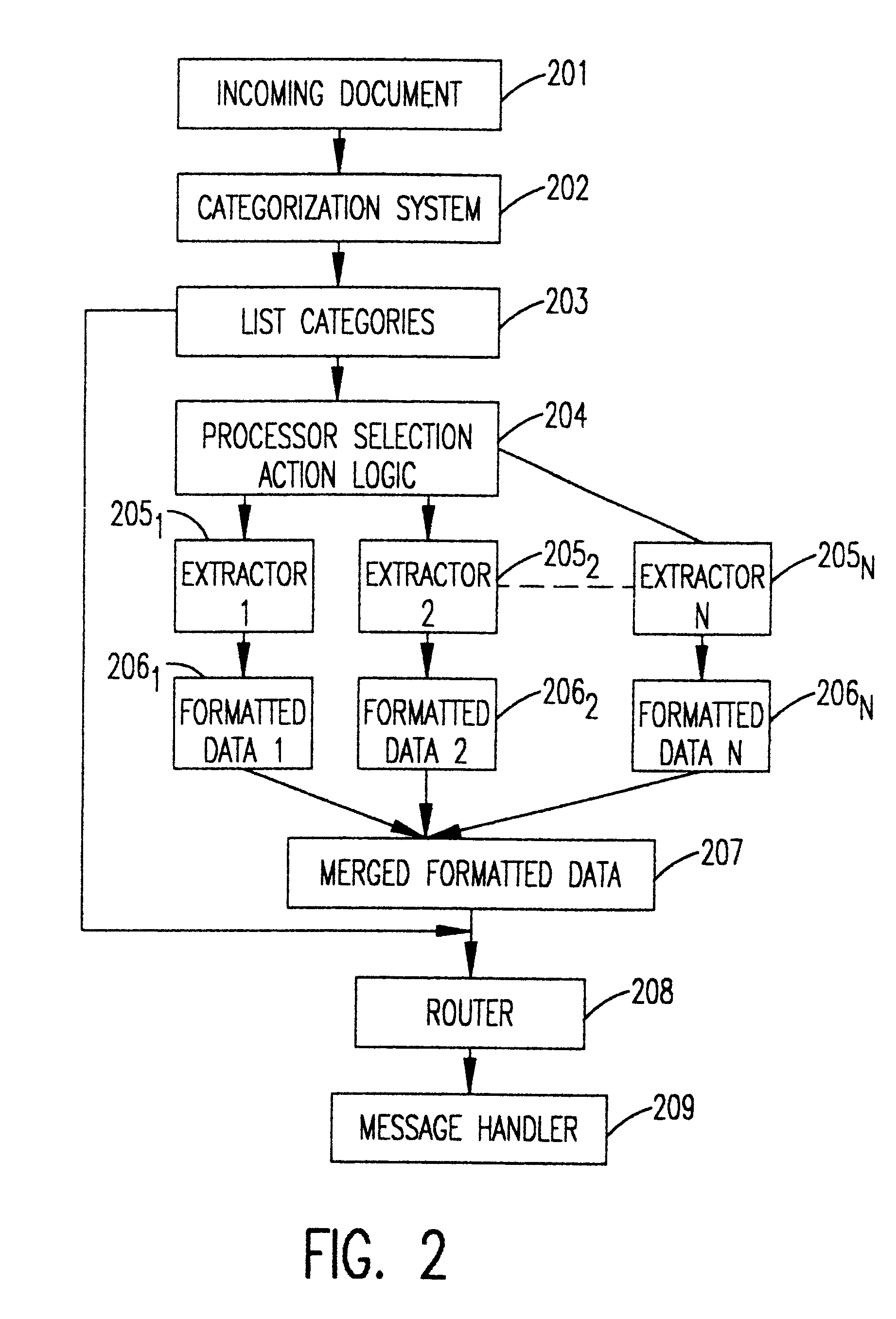Categorization based text processing
- Summary
- Abstract
- Description
- Claims
- Application Information
AI Technical Summary
Benefits of technology
Problems solved by technology
Method used
Image
Examples
Embodiment Construction
Referring now to the drawings, and specifically to FIG. 1, there is shown a block diagram of the categorization based text processing system of the invention. An input document is categorized by the categorization system 101 and the results of that categorization are output either to the processor selection system 102 or directly to the router 104. At the most general level, the invention solves the problem by a "divide and conquer" technique; that is, associating particular processes with particular categorizations, where any text categorizer could be used for the categorization system 101. In the preferred embodiment, the categorization system 101 is a rules-based classifier, preferably based on supervised machine learning techniques as applied to text categorization, and where symbolic rules are generated using a decision-tree-based induction method, but not precluding manually written or edited rules. An example of such a decision-tree-based symbolic rules induction system for t...
PUM
 Login to View More
Login to View More Abstract
Description
Claims
Application Information
 Login to View More
Login to View More - R&D
- Intellectual Property
- Life Sciences
- Materials
- Tech Scout
- Unparalleled Data Quality
- Higher Quality Content
- 60% Fewer Hallucinations
Browse by: Latest US Patents, China's latest patents, Technical Efficacy Thesaurus, Application Domain, Technology Topic, Popular Technical Reports.
© 2025 PatSnap. All rights reserved.Legal|Privacy policy|Modern Slavery Act Transparency Statement|Sitemap|About US| Contact US: help@patsnap.com



